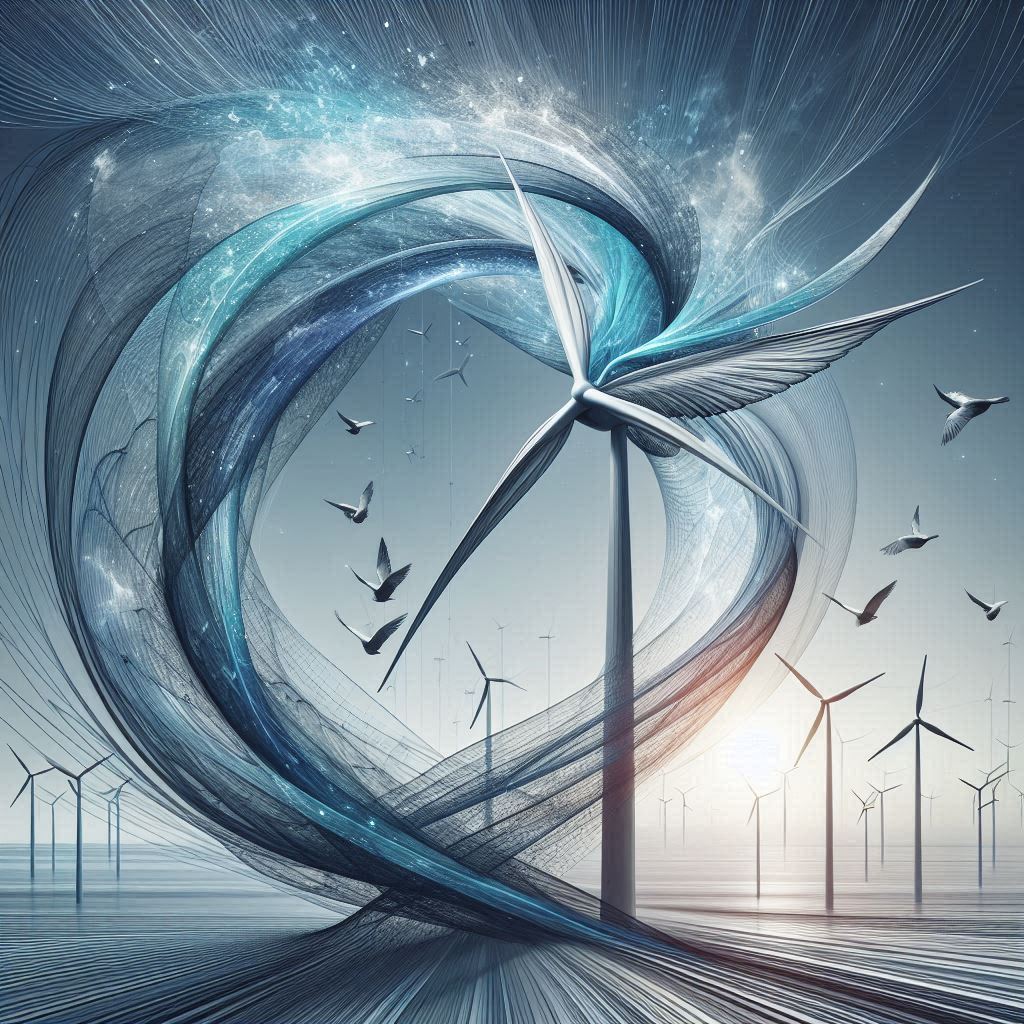The fundamental principle of observing and emulating nature’s ingenious strategies for energy production, storage, and optimization is the center of the biomimetic design. It involves tapping into the blueprint of life itself to develop technologies capable of sustaining our future needs. Take, for instance, the way leaves effortlessly convert sunlight into usable energy through photosynthesis, or the intricate architectural design of termite mounds that naturally regulate temperature for optimal living conditions. Each of these phenomena serves as a blueprint for biomimetic innovation, potentially leading to groundbreaking advancements in renewable energy solutions.
Mimicking nature’s efficiency and resilience, scientists and engineers are unlocking novel approaches to address pressing energy challenges. From designing solar panels inspired by the structure of butterfly wings to developing wind turbines modeled after the fins of humpback whales, the possibilities are endless.
Artificial photosynthesis stands out as a pinnacle of nature-inspired technology within the realm of biomimicry in energy. Leaves, with their adeptness at harnessing sunlight and transforming it into usable energy through photosynthesis, serve as a remarkable model. Building upon this natural phenomenon, scientists and engineers are delving into the creation of photovoltaic cells that replicate this process. This endeavor holds the potential to overhaul solar energy, enhancing its efficiency and potentially endowing it with self-repair capabilities akin to those found in natural leaves.
The Cooling Mastery of Termite Mounds
Termite’s mound-building prowess demonstrates a remarkable feat of natural engineering. Termite mounds maintain a steady internal temperature, unaffected by external climate fluctuations. Architects and engineers have taken note, drawing inspiration from these structures to design buildings with efficient natural ventilation systems. Emulating the intricate airflow mechanisms found in termite mounds, modern constructions have significantly decreased reliance on artificial cooling methods.
Termites, often overlooked in discussions of environmental adaptation, have unwittingly become pioneers in sustainable design. Their mounds serve as a testament to the ingenuity of nature, offering valuable lessons in thermal regulation. Human-built structures can operate more harmoniously with their surroundings, reducing energy consumption and minimizing environmental impact.
Learning from Whales and Sharks
Nature’s movements offer valuable insights into enhancing efficiency. While many focus on static structures, the fluid dynamics of animals like whales and sharks provide inspiration for innovative engineering solutions. Take, for instance, the humpback whale, renowned for its efficient navigation through water. The distinctive bumps, or tubercles, adorning its fins have sparked interest in biomimetic design for turbines and fans. Engineers have replicated these tubercles in wind turbine blade designs, resulting in increased efficiency and reduced noise levels.
Likewise, the unique properties of shark skin have not gone unnoticed. Evolved over millions of years for optimal hydrodynamics, shark skin features microscopic scales that reduce drag and increase speed. Inspired by this natural efficiency, engineers have incorporated similar surface designs into various turbines, improving their performance and requiring less energy for operation.
Studying the fluid of these marine creatures, researchers and engineers are uncovering new possibilities for enhancing efficiency in man-made systems. Embracing nature’s solutions, such as the streamlined movements of whales and sharks, allows for the development of more sustainable and effective technologies.
The Glowing Promise of Bioluminescence
Bioluminescence, the mesmerizing natural phenomenon exhibited by organisms such as fireflies and deep-sea creatures, holds immense promise for sustainable lighting solutions. Scientists and engineers are delving into the mechanisms behind these organisms’ ability to produce light efficiently, without generating excess heat. This exploration has spurred the development of innovative lighting technologies inspired by nature.
This convergence of biological principles and technological innovation exemplifies the field of biomimicry, where nature’s brilliance serves as a blueprint for sustainable design. As we continue to unlock the secrets of bioluminescence, we pave the way for a brighter, more energy-efficient future. Embracing these bio-inspired lighting solutions offers a beacon of hope for reducing our carbon footprint and illuminating our world in harmony with nature’s genius.
Harnessing the Wisdom of Plants for Better Storage
While energy production is crucial, effective energy storage presents its own set of challenges. Fortunately, nature inspires with its ingenious solutions. Certain plants and seeds have evolved remarkable mechanisms for densely and reliably storing energy. This natural phenomenon has sparked innovation in the development of advanced battery technologies and supercapacitors.
Drawing from nature’s wisdom, researchers are exploring ways to create high-density storage systems that can efficiently store renewable energy for extended periods. By emulating the efficient energy storage methods found in plants and seeds, these technologies aim to make sustainable power more viable and reliable.
Integrating Biomimetic Design
The application of biomimetic design in renewable energy solutions is not just a theoretical exercise; it’s becoming a tangible part of our world. Buildings that breathe, solar panels that mimic leaves, turbines shaped by the fluid dynamics of marine creatures, and batteries inspired by the natural storage capabilities of seeds—are all evidence of a future where nature and technology walk hand in hand.
If we’re gonna continue to explore and understand the natural world, the potential for biomimetic design in energy seems limitless. The beauty of applying nature-inspired technology lies in its efficiency and sustainability and also in its approach to innovation. With the help of learning from the billions of years of R&D nature has put into every leaf, wing, and wave, we unlock a new era of sustainable innovation that could redefine our energy landscape.


